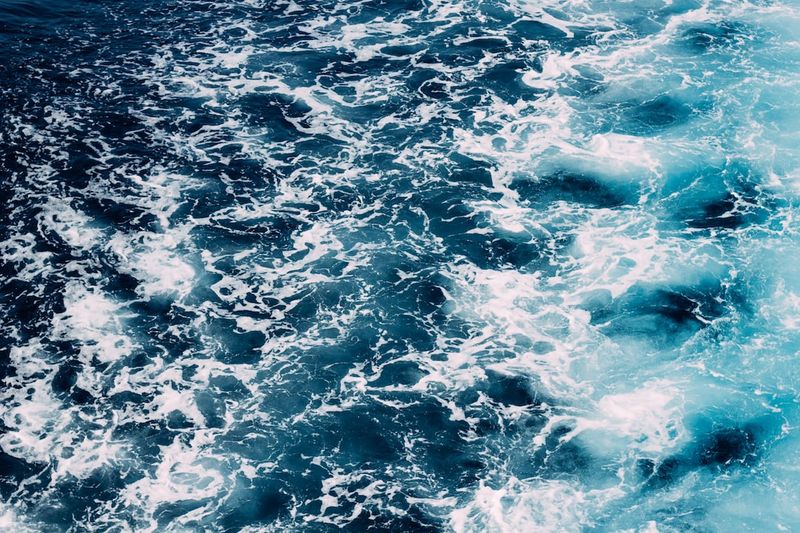A Rare Encounter: Deep-Sea Researchers Spot a Dumbo Octopus off the Coast of Hawaii
Introduction
In a rare and astounding discovery, scientists searching the deep sea off the coast of Hawaii have captured breathtaking video footage of a dumbo octopus. Known as the deepest-living of all known octopuses, this elusive creature has rarely been observed by humans due to its ability to inhabit depths of up to 13,000 feet. The dumbo octopus gets its name from its unique ear-like fins that it uses to propel itself through the water in search of snails and other invertebrates. This recent encounter, documented by the nonprofit Ocean Exploration Trust aboard the research vessel E/V Nautilus, provides valuable insights into the mysterious world of deep-sea creatures.
A Needle in a Haystack
The dumbo octopus belongs to a genus of octopuses that is not only uncommon but also inhabits a vast and largely inaccessible underwater habitat. This makes encountering one of these creatures akin to finding a needle in a haystack. The ocean, with its immense expanse, can be a lonely place for these creatures, and it is believed that females keep their eggs in different stages of development so that they can mate with a male if they are fortunate enough to encounter one. The process of finding a suitable mate requires females to descend to the depths of the ocean to lay their eggs on rocks, an arduous journey that highlights the remarkable adaptations of these creatures to survive in extreme environments.
The Diversity of Dumbo Octopuses
More than a dozen species of dumbo octopuses have been discovered so far, each with its own unique characteristics and adaptations. While the largest recorded dumbo octopus reached almost six feet in length, most individuals are much smaller. Unlike other cephalopods, dumbo octopuses do not possess ink sacs, as they rarely encounter other predators in the deep sea. This adaptation illustrates the different strategies employed by marine creatures to navigate their respective environments.
The Significance of Deep-Sea Exploration
The video footage captured by the E/V Nautilus is not only a visual spectacle but also serves as a reminder of the importance of deep-sea exploration. The team’s efforts to explore the Papahānaumokuākea Marine National Monument, a sanctuary larger than all U.S. national parks combined, shed light on the diversity and complexity of life in the deep sea. As humans, we are naturally drawn to explore the unknown and uncover the mysteries within our planet. By delving into the deep sea, we gain valuable insights into the potential for life in extreme environments, the patterns of evolution, and the delicate balance of our marine ecosystems.
Editorial: The Intersection of Wonder and Responsibility
Preserving the Deep Sea
Encounters like the one with the dumbo octopus remind us of the wonders that exist beneath the surface of the ocean. They serve as a call to action, urging us to protect and preserve these delicate ecosystems that are still largely unexplored. The Papahānaumokuākea Marine National Monument, where this encounter took place, is a sanctuary that harbors countless marine species and plays a crucial role in maintaining global biodiversity. As we marvel at the astounding beauty of deep-sea creatures, it is imperative that we take steps to mitigate the threats they face, such as overfishing, pollution, and climate change. The preservation of these habitats is not only essential for the survival of these magnificent creatures but also for the overall health of our planet.
The Search for Knowledge
The pursuit of knowledge is the driving force behind scientific exploration, and the deep sea presents an untapped wellspring of understanding. By studying the adaptations and behaviors of deep-sea creatures, scientists can gain insights into biological processes that may have broader implications for fields such as medicine and biotechnology. Furthermore, deep-sea exploration allows us to expand our understanding of our planet’s history and the evolution of life itself. As we delve deeper into the unknown realms of the ocean, we uncover a treasure trove of knowledge that can shape our understanding of the world and inspire future generations to continue exploring.
Conclusion: The Call to Protect and Explore
The recent encounter with a dumbo octopus off the coast of Hawaii is a testament to the awe-inspiring diversity of life in the deep sea. It serves as a reminder of the responsibility we bear to protect these fragile and mysterious ecosystems. The preservation of marine habitats and the reduction of human impacts are imperative to ensure the survival of not only the dumbo octopus but also countless other deep-sea creatures. Simultaneously, deep-sea exploration should continue to be pursued, as it offers immense potential for scientific discovery and a deeper understanding of the world we inhabit. By preserving and exploring the deep sea, we can foster a harmonious relationship between humanity and the natural world, grounded in wonder, responsibility, and the quest for knowledge.

<< photo by Tijana Mihajlovic >>
The image is for illustrative purposes only and does not depict the actual situation.
You might want to read !
- Travis Kelce on Addressing Taylor Swift Romance Rumors: Navigating Celebrity Gossip on His Podcast
- Rewriting the Narrative: Travis Kelce’s Ex Reflects on Taylor Swift Comments and Retains Her Position
- The True Impact of Tom Sandoval’s Scandal: Ariana Madix’s Reflections
- “The Depths Unveiled: James Cameron’s Reflection on Deep-Sea Exploration”
- Mysterious Sighting: Unveiling the Enigma of the Rare ‘Dumbo’ Octopus
- The End of an Era: Reflecting on the Legacy of Lolita the Orca at Miami Seaquarium
- Lamenting the Loss: The Tragic Demise of Lolita, the Long-Captive Orca
- “Sink Your Teeth Into Shark Week 2023: Ultimate Viewing Guide and Schedule!”
- Exploring Titanic’s Legacy: OceanGate Sub Uncovers Debris 1600 Feet Away




